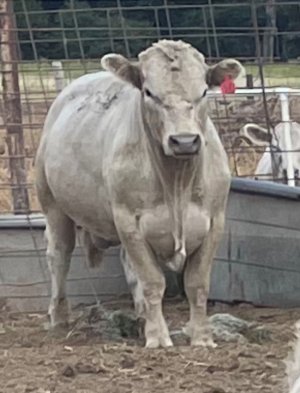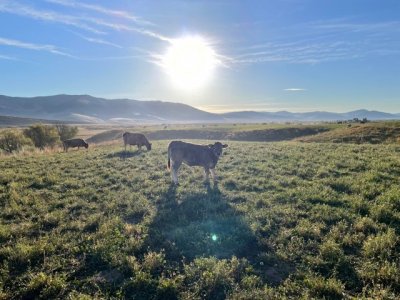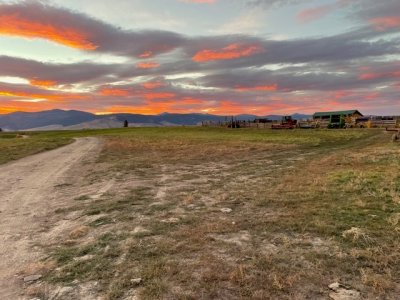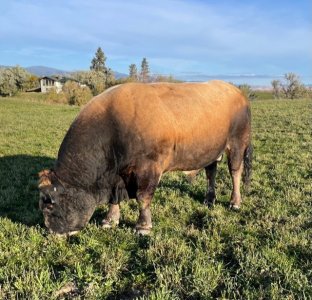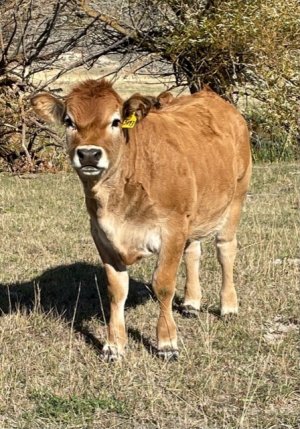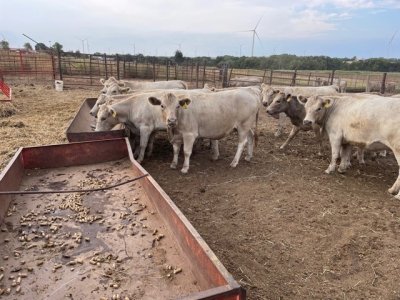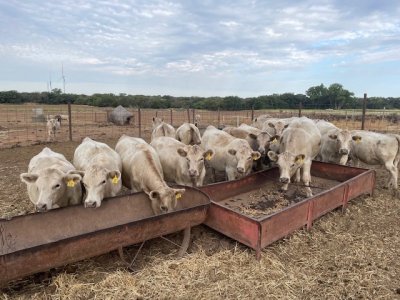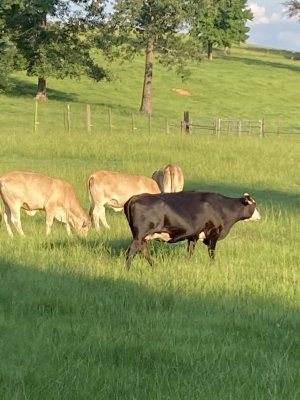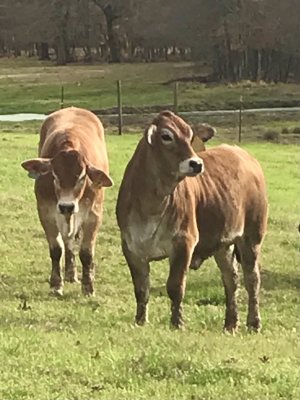Well as it happens, I am starting a new herd in central NC. Had to sell everything 8 years ago and finally got back into a position to make it happen again. After years of re-thinking I have a plan I believe in though most will think it's insane probably. The original plan was registered Aubrac and Angus. I think I have a better plan now.
2 Breeds: Aubrac and Murray Grey
Each breed is out of mostly genetically isolated registered herds. Purebreds will be managed as their own herd even though they run together most of the year. Herd will be closed after the initial purchase.
Selection:
10 Murray Grey bred heifers have been purchased and will arrive in about 10 days. I went to
Crispin Murray Greys (Thomas, OK) because they have a super-consistent genetic base and aren't using different bulls all the time. Crispin purchase a large portion of OK Jeanne's breeding animals and has pretty much stuck to the same animals since then. This
ribeye picture told me I was on the right track for grass finishing with these genetics. Wallace Crispin had the Igenity Beef panels for all animals but due to his severe drought conditions we didnt have time to run a T-Snip for fescue tolerance. He has sent his cattle to fescue country before with no bad feedback so it's a little bit of a gamble but worth it to me.
I flew to Hot Springs, MT to visit Scott Fredrickson's Aubrac herd - I can't imagine anyone would argue against this being the best Aubrac herd in North America. We selected 26 heifer calves and 9 bulls calves to run DNA on. These were based on me eye, past generations at the ranch to look at, and Scott's deep knowledge of their history and tendencies. All animals are having Igenity Beef, Envigor, T-Snip, BVD PI, and all bulls were tested for Horned/Polled. DNA will just be to eliminate the bottom end of traits that are important to my system. Mainly, the T-Snip results are of major concern since this herd has no experience with fescue. I will get 10 heifers and a bull out of this group - hopefully delivered by the end of November.
AgBotanica's T-Snip test is relatively knew but has quite a broad base of proven results on average. Being a test for fescue tolerance, it will not find animals that are unaffected by fescue - just those that should tolerate it better. I talked with Dr. Craig Roberts about what I could expect for results from a herd that has no historic selection for fescue issues. He said that the results would be broad but mostly bell-shaped. The results come back as a 0-50 score and he breaks that into 1-5 star groups. His instruction was to not keep any 1 stars, mostly 3-5 star females and 4-5 star bulls. His estimate was that I would be 5+ years further along in finding the right animals for fescue by going with these guidelines on the initial purchase. AgBotanica uses Neogen to run a custom panel from the DNA already submitted for Neogen products. This process is a little cumbersome but hopefully worth the trouble.
Breeding:
Bulls will come from within the herd. Tight linebreeding will be persistent and the first objective is to remove problems. Bulls will be bred to their own breed for the first 21 days then swapped to the opposite breed for 3 cycles then a terminal black bull for the rest of the time.
Breeding Result/Marketing:
Purebred Aubrac Seedstock
Purebred Murray Grey Seedstock
F1 Replacement Females
F1 Steers for grassfed beef

